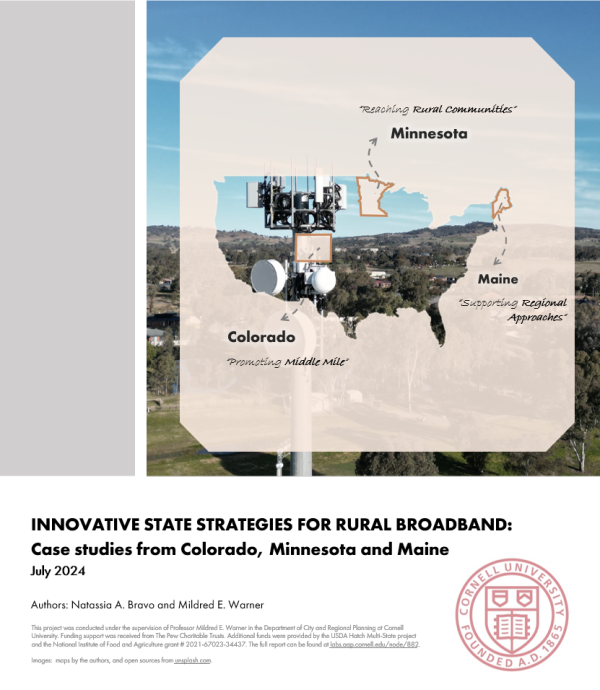State Case Studies
Natassia Bravo and Mildred E. Warner
Disparities in urban-rural access to broadband infrastructure have been linked to place-based barriers such as low population density, remoteness, and a challenging terrain. Broadband deployment in rural areas is costly, and the low rate of return provides little incentive for Internet Service Providers. State broadband programs are tackling the cost barrier with broadband grants, which play a critical role in offsetting the costs of buildout. To access these funds, rural communities and providers must meet a number of eligibility criteria and requirements – such as matching a percentage of the project’s costs or applying as a public-private partnership. This study looks at local cases in Minnesota, Colorado and Maine to understand the relative role of state broadband policy, local leadership and private investment in extending broadband coverage to rural areas.
Bravo, N. & Warner, M.E. (2024). Innovative State Strategies for Rural Broadband: Case studies from Colorado, Minnesota and Maine. Department of City and Regional Planning, Cornell University.



